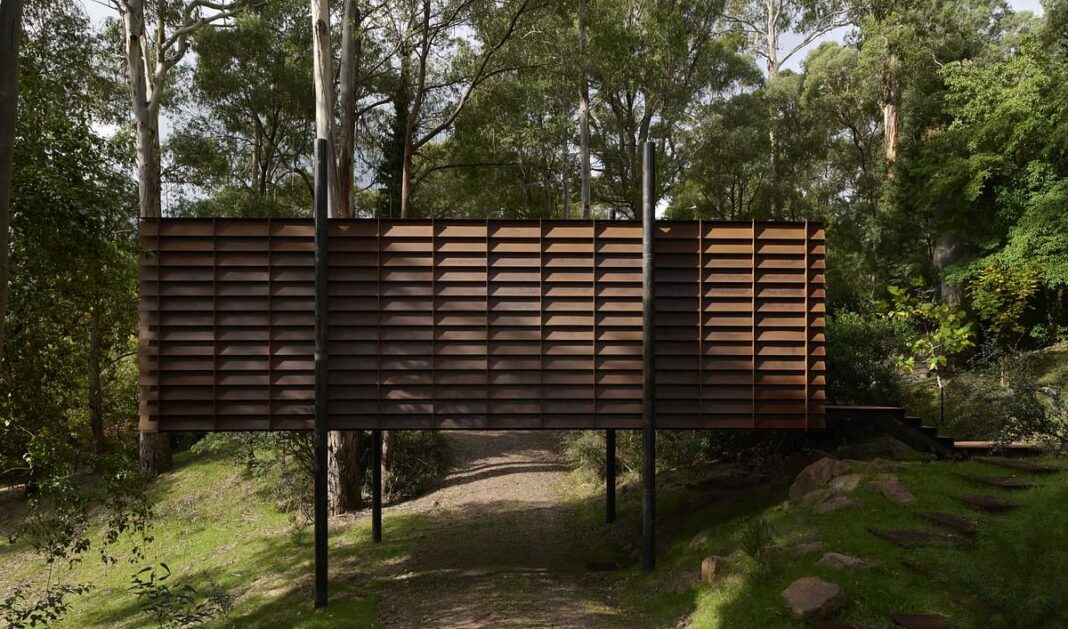anchor
Image: Earl Carter
Australian designer Robbie Walker has designed an elevated, steel cabin, inspired by trees, in Australia’s Victorian High Country.
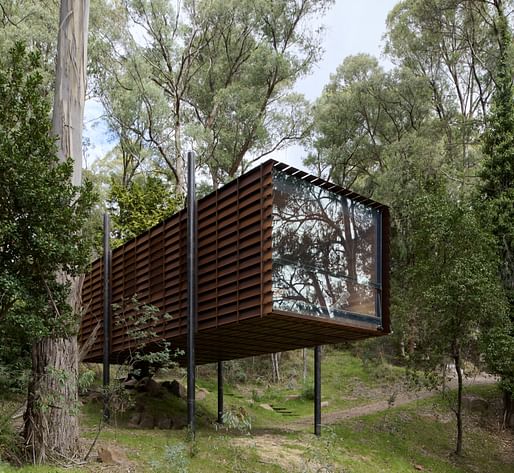
Called Sawmill Treehouse, the structure is the result of the client’s desire for a small dwelling for family and friends. The project site lies at the beginning of a gully where street water was discharged, with one apparent flat area in the space, surrounded by tall trees. As a result, Walker decided to situate the building up amongst the trees and out of the water.
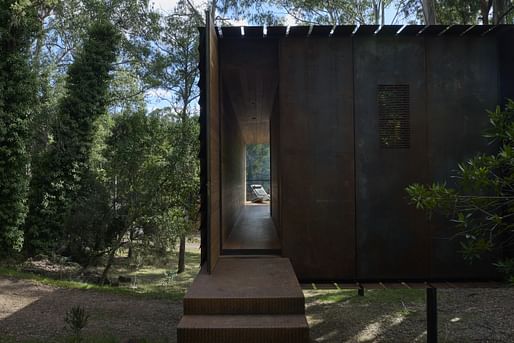
Sawmill Treehouse was built with non-flammable corten steel and lined with Tasmanian Oak timber. The structure’s design was inspired by the trees. Its four stilt-like columns represent tree trunks, while its façade of slatted steel panels capture light more randomly and organically than a flat panel, like the leaves on trees.
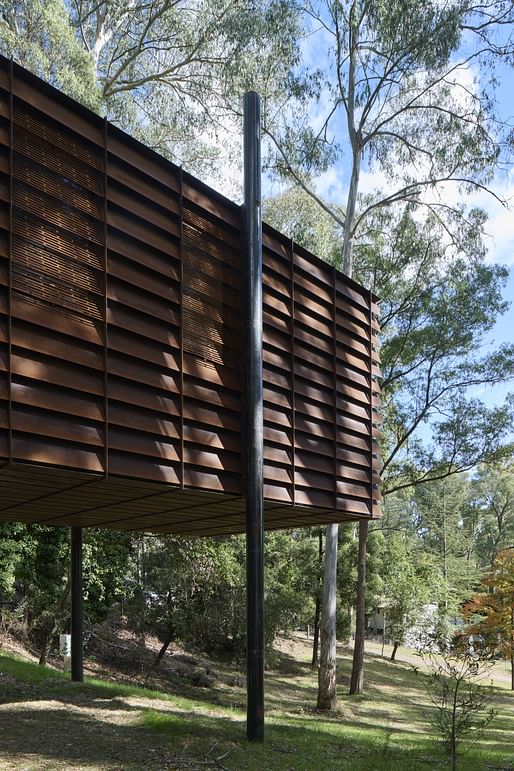
These slats function to help the building breathe and stay cool during the summer by providing shade. In addition, the space between the slats and the home allows air to move through, providing more cooling.
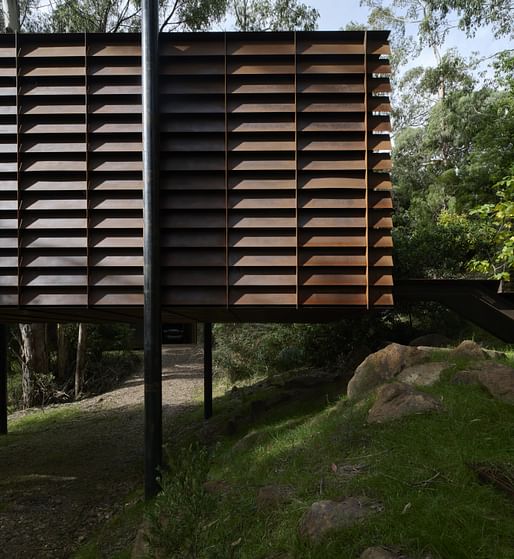
The home includes one bedroom, bathroom, kitchen, and living room. The living area features full-span glazing, offering expansive views of the surrounding forest and natural light to flood the space.
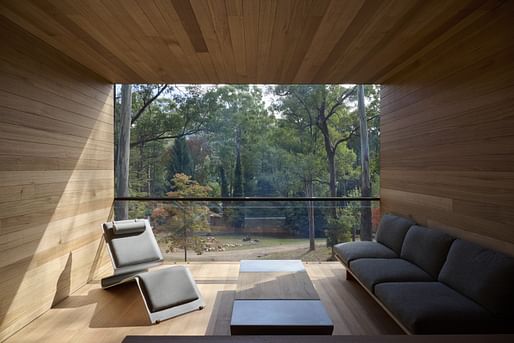
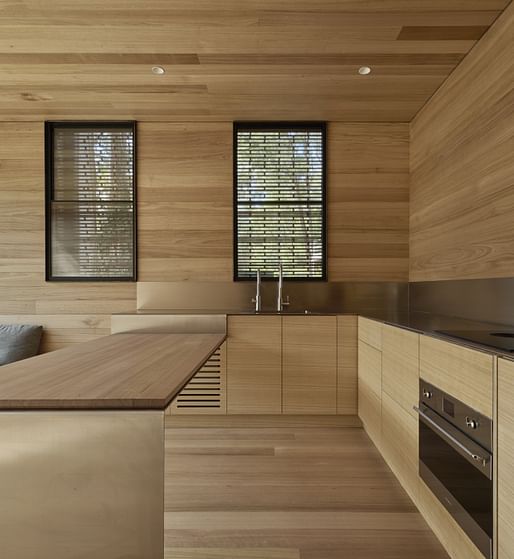
Image: Earl Carter
In addition, its position above the ground allows for car access underneath, which leads to a garage building that was constructed on a flatter part of the site. The garage also houses a laundry and an outdoor kitchen.
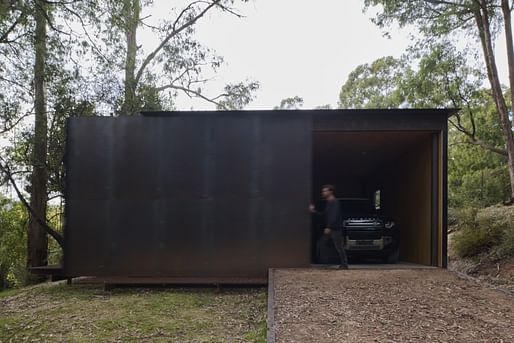
Image: Earl Carter

Despite including sustainable design elements, such as the use of timber and recyclable steel, the designer notes that the residence’s small, contained size is its most environmentally efficient measure.
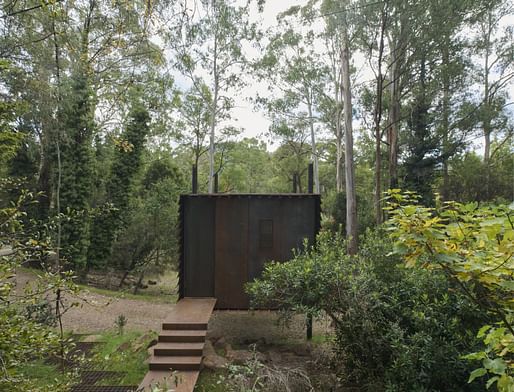
As stated in the project’s press release, “In a system that rewards excess, choosing to build less—not out of necessity but out of principle—is just as, if not more, important than the materials themselves. Seeing that decision through takes real courage.”

